032117_YKBP_A6.pdf






6 Broadcaster Press
March 21, 2017 www.broadcasteronline.com
National Ag Week
March
19 - 25
Thank a Farmer Today!
Understand Hardiness Zones Before Planting
Gardening benefits the environment in
myriad ways. Maintaining natural landscapes
and preserving green spaces can reduce the
collective carbon footprint of the human
race. Trees, flowers and other greenery filter
the air and create welcoming habitats for all
species of animals and insects.
Many home gardeners set out each spring
to create landscapes that cater to all of the
senses. But choosing plants that are unlikely
to thrive in certain climates can lead to dissatisfaction and premature plant demise and
may require gardeners to use more fertilizers, pesticides and other not-so-Earth-friendly techniques to help plants thrive.
One of the more important steps gardeners can take before spring arrives is to
educate themselves about plant hardiness
zones. Hardiness zones are defined by the
average climatic conditions of the region
and are broken down into various zones.
The USDA Hardiness Zone map divides
North America into 13 separate zones. Each
zone is marked by 10 F incremental differences from the last zone. In some versions
of the map, each zone is further divided
into “a” and “b” regions.
The National Gardening Association
says the USDA Hardiness Zone Map was
revised in 2012. The latest version was
jointly developed by the USDA’s Agricultural Research Service and Oregon State
University’s PRISM Climate Group. To help
develop the new map, the USDA and Oregon
State University requested that horticultural and climatic experts review the zones
in their geographic areas. As a result, the
zone boundaries in the 2012 edition of the
map have shifted in many areas. Canada’s
Hardiness Zone map, updated in 2010, uses
nine different zones.
Zone maps are tools that show where
permanent landscape plants can adapt.
Home gardeners who are looking for shrubs
or perennials to last year after
year should recognize that such
plants must tolerate year-round
conditions, including the lowest
and highest temperatures and
the amount of precipitation.
Snow cover and humidity also
can impact a plant’s propensity
to thrive.
While zone maps are not
perfect, they can be useful in
planning and
ensuring the survival of future
gardens. Plant and seed manufacturer Burpee says that other
USDA Hardiness Zone map courtesy of the USDA. View
factors to consider that
also affect the viability of plants an interactive version at the USDA website.
include wind, moisture and soil conditions.
Visit www.burpee.com/findgrowzone to
The company offers an interactive zone
enter a zip code.
finder on their website that will indicate the
Learn more about plant hardiness at plant
hardiness zone as well as average first and
hardiness.ars.usda.gov/PHZMWeb. In Canada,
last frost dates.
visit the site www.planthardiness.gc.ca/?m=1.
Midstates Community and
USDA Offers Farmers and
Economic Development
Ranchers Disaster Assistance
Conference Brings Community
Leaders Together
U.S. Department of Agriculture
The 14th annual Midstates Community
and Economic Development Conference
#RURALROCKS will be held April 6 from 9
a.m. to 3:30 p.m. at the Marina Inn Hotel and
Conference Center in South Sioux City, Neb.
The Midstates Community and Economic
Development Conference is one of the largest rural development events in the tri-state
area and is a joint project of ten agencies and
organizations in Iowa, Nebraska, and South
Dakota. It is designed for local leaders and
offers workshops on successful strategies
and innovative ideas for rural development.
The keynote speaker this year will be
Deb Brown of Save Your Town who will
share stories of small town successes and
help attendees determine ways they can
build possibility in their towns, improve
the idea climate in their rural communities,
and learn practical steps to take to draw a
crowd of supporters, create more connections, and get started with small steps.
Three breakout sessions will feature
twelve presenters representing success stories in Iowa, Nebraska and South Dakota. Topics for these workshops include marketing,
housing, vacant lots, workforce education,
“old to new” and local food entrepreneurs.
Communities are encouraged to bring
two or more representatives to the conference so people can attend breakout
sessions that will run concurrently. Regis-
FSA offers disaster assistance and lowinterest loan programs to assist agricultural
producers in their recovery efforts following
floods or similar qualifying natural disasters.
trations are due by March 31, and online
Available programs and loans include:
registration is available at www.extension.
• Non-Insured Crop Disaster Assistance
iastate.edu/woodbury.
Program (NAP) - provides financial asThe planning committee for the Midsistance to producers of non-insurable
states Conference is made up of the City of
crops when low yields, loss of inventory,
South Sioux City, East River Electric Power
or prevented planting occur due to natural
Coop, Iowa State University Extension
disasters (includes native grass for grazing).
and Outreach, Monona County Economic
• Livestock Indemnity Program (LIP) Development, South Dakota State University offers payments to eligible producers for
Extension, SIMPCO Council of Governments, livestock death losses in excess of normal
Siouxland Community Foundation, Siouxmortality due to adverse weather. Eligible
land Economic Development Corporation,
losses may include those determined by FSA
USDA Rural Development and Woodbury
to have been caused by floods, blizzards,
County Rural Economic Development.
wildfires, tropical storms, tornados lightenFinancial sponsors of the conference
ing, extreme heat, and extreme cold. Producinclude City of South Sioux City, Dakota
ers will be required to provide verifiable
Resources, East River Electric Power Coop- documentation of death losses resulting from
erative, Inc., Great Southern Bank, Heian eligible adverse weather event and must
dman Law Firm, Iowa West Coast Initiative, submit a notice of loss to their local FSA ofNebraska Public Power District, Northwest fice within 15 calendar days of when the loss
Iowa Development, Northwest Iowa Power
of livestock is apparent.
Cooperative, Plymouth County Economic De• Emergency Assistance for Livestock,
velopment, Security National Bank, SIMPCO
Honeybees, and Farm-Raised Fish Program
Council of Governments, Sioux City Journal, (ELAP) - provides emergency relief for lossSiouxland Community Foundation, Siouxland es due to feed or water shortages, disease,
Economic Development Corporation, Sioux- adverse weather, or other conditions, which
land Initiative, South Dakota Community
are not adequately addressed by other
Foundation and Wells Enterprises.
disaster programs. ELAP covers physically
For registration details and additional
damaged or destroyed livestock feed that
information, please contact ISU Extension and was purchased or mechanically harvested
Outreach- Woodbury County at (712) 276-2157 forage or feedstuffs intended for use as feed
or visit www.extension.iastate.edu/woodbury. for the producer's eligible livestock. In order
to be considered eligible, harvested forage
must be baled; forage that is only cut, raked
or windrowed is not eligible. Producers
must submit a notice of loss to their local
FSA office within 30 calendar days of when
the loss is apparent.
ELAP also covers up to 150 lost grazing
days in instances when a producer has been
forced to remove livestock from a grazing
pasture due to floodwaters.
For beekeepers, ELAP covers beehive
losses (the physical structure) in instances
where the hive has been destroyed by a
natural disaster including flooding, high
winds and tornadoes.
• Emergency Loan Program – Available
to producers with agriculture operations
located in a county under a primary or
contiguous Secretarial Disaster designation.
These low interest loans help producers recover from production and physical losses
due to drought, flooding.
To establish or retain FSA program
eligibility, farmers and ranchers must report
prevented planting and failed acres (crops
and grasses). Prevented planting acreage
must be reported on form FSA-576, Notice
of Loss, no later than 15 calendar days after
the final planting date as established by FSA
and Risk Management Agency (RMA).
For more information on disaster assistance programs and loans visit www.fsa.
usda.gov/ or contact your local FSA Office.
To find your local FSA county office, visit
http://offices.usda.gov.
Study to Look at Impacts of Diversified Crop Rotation
BROOKINGS, S.D. — Throughout the
2017 and 2018 growing seasons, a team
of researchers from South Dakota State
University will be assessing the impacts of
diversified crop rotation cropping systems
compared to traditional corn-soybean rotation. The study will also review the impact
cover crops have on soil health and crop
yields. The study, Crop Diversification on
Soil Health and Farm Profitability in South
Dakota, is funded by Natural Resources
Conservation Service (NRCS) Conservation
Innovation Grant in 2016.
"Past studies have shown that diversified
crop rotations build soil health and result
in insect, weed and disease control as well
as many other environmental and economic
benefits," said Tong Wang, SDSU Extension
Advanced Production Specialist. "However,
in recent years, only two crops - corn and
soybeans - make it into the rotation of most
South Dakota farmland."
Wang is one of two main investigators
on the project. She is joined by Sandeep Kumar, Assistant Professor in the SDSU Plant
Science Department.
The two-year study will look at two
South Dakota farm sites. The sites will include a two-crop, three-crop and four-crop
rotation system. Each rotation system will
be ranked in terms of total input cost and
economic profit with and without subsidy.
"This study will demonstrate the impacts
of diversified agroecosystems - cornsoybean-wheat, corn-soybean-wheat-oats,
corn-soybean-oats and cover crops and notill systems - on soil health and economic
benefits in South Dakota," Kumar said.
A good time to consider diversified crop
rotation
Wang added that the study aims to
increase awareness among producers
about crop diversification such as cornsoybean-wheat, corn-soybean-wheat-oats,
corn-soybean-oats and cover crops and
no-till systems impact on soil health and
economic benefits.
"Diversity of crop rotations is important
to soil health and farm profitability - today
and into the future," Wang said.
The corn and soybean-only rotation seen
on several South Dakota farms is thought to
have been driven by market highs. Around
2012, the price-per-bushel for these two
crops peaked with corn at $7.39 per bushel
and soybeans receiving $16 per bushel.
Just five years later, the markets look
much different. According to the Feb. 9,
2017, the U.S. Dept. of Agriculture, Agricultural Supply and Demand Estimates the
projected season-average corn price for
2017 is $3.20 to $3.60 per bushel, while the
soybean price is between $9.10 per bushel
and $9.90 per bushel.
Today's market lows give farmers an
opportunity to consider re-introducing crop
diversity into their farm fields.
"The low corn and soybean market
prices together with increasing production
costs in recent years have squeezed much
of the profit out of the traditional corn-soybean rotation," Wang said. "Producers may
consider adding crops like wheat and oats
to the rotation.”
THE STRIP TILL
ADVANTAGE
Elk Point, SD
SERVICES AVAILABLE
• Custom Strip Till
• GPS Soil Sampling
• Soil Fertility Planning
• Crop Scouting
• Variable Rate Fertility
Call to discuss Spring Strip Till options
JOEY HANSON
Crop Consultant/CCA
605.659.4783 • joey.hanson@diversifiedagronomy.com
• Highly efficient use of fertilizer
by directly placing below the
crops roots and minimizes
tie-up unlike broadcast
applications
• Dual placed nutrients that
promotes early, healthy root
development and creates an
optimum, fertile environment
for seed
• Increases yield while lowers
inputs such as labor, fuel, and
reduced wear and tear on
your equipment
• Offers best of both worlds:
Conservation aspects of no till,
plus, increased yields and soil
quality of conventional tillage
FOR ALL YOUR
Fertilizer • Crop Protection
and Custom Application needs
Stop in today and visit with your local rep!
Office: 605-761-1001 • 47261 SD Hwy 48
Elk Point, SD 57025 • valleyagsupply.com
CUSTOM STRIP TILL • CALL 605.659.4783

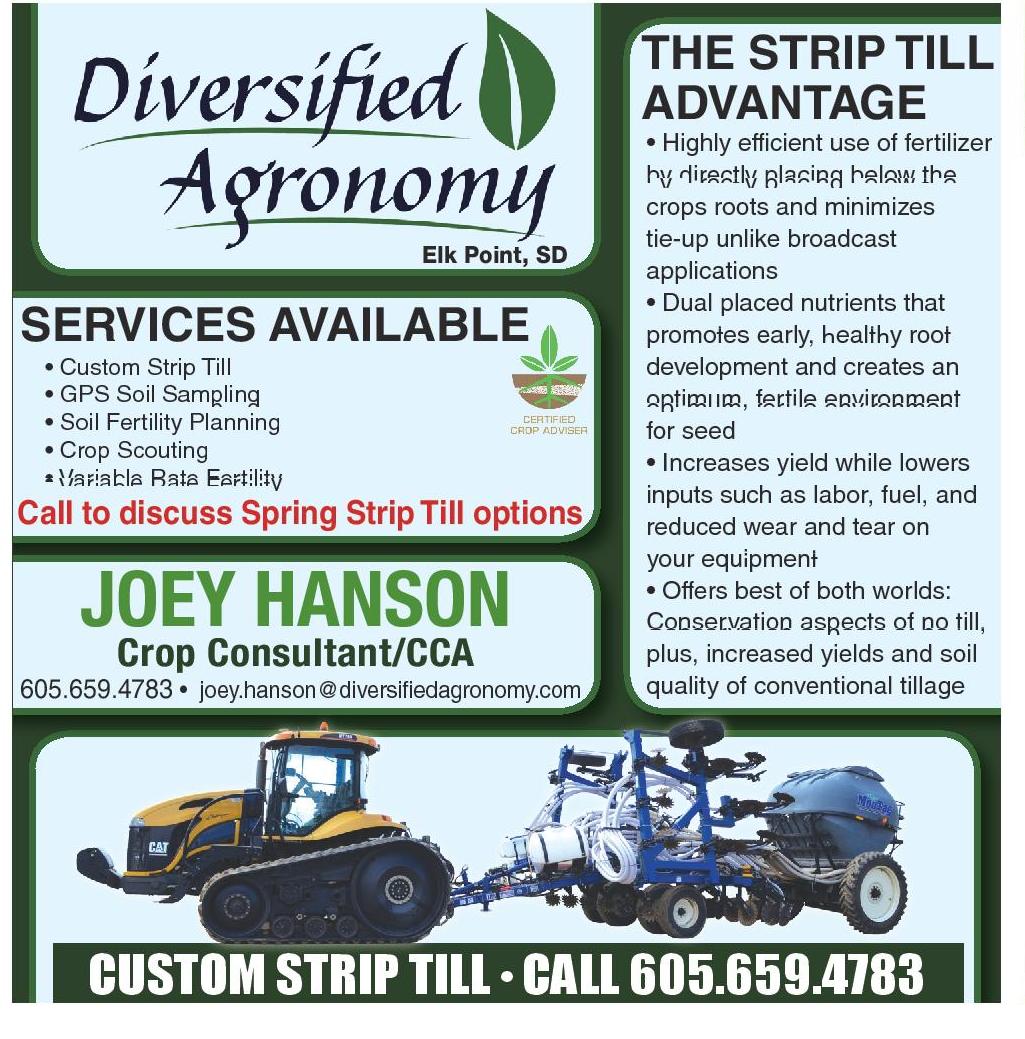

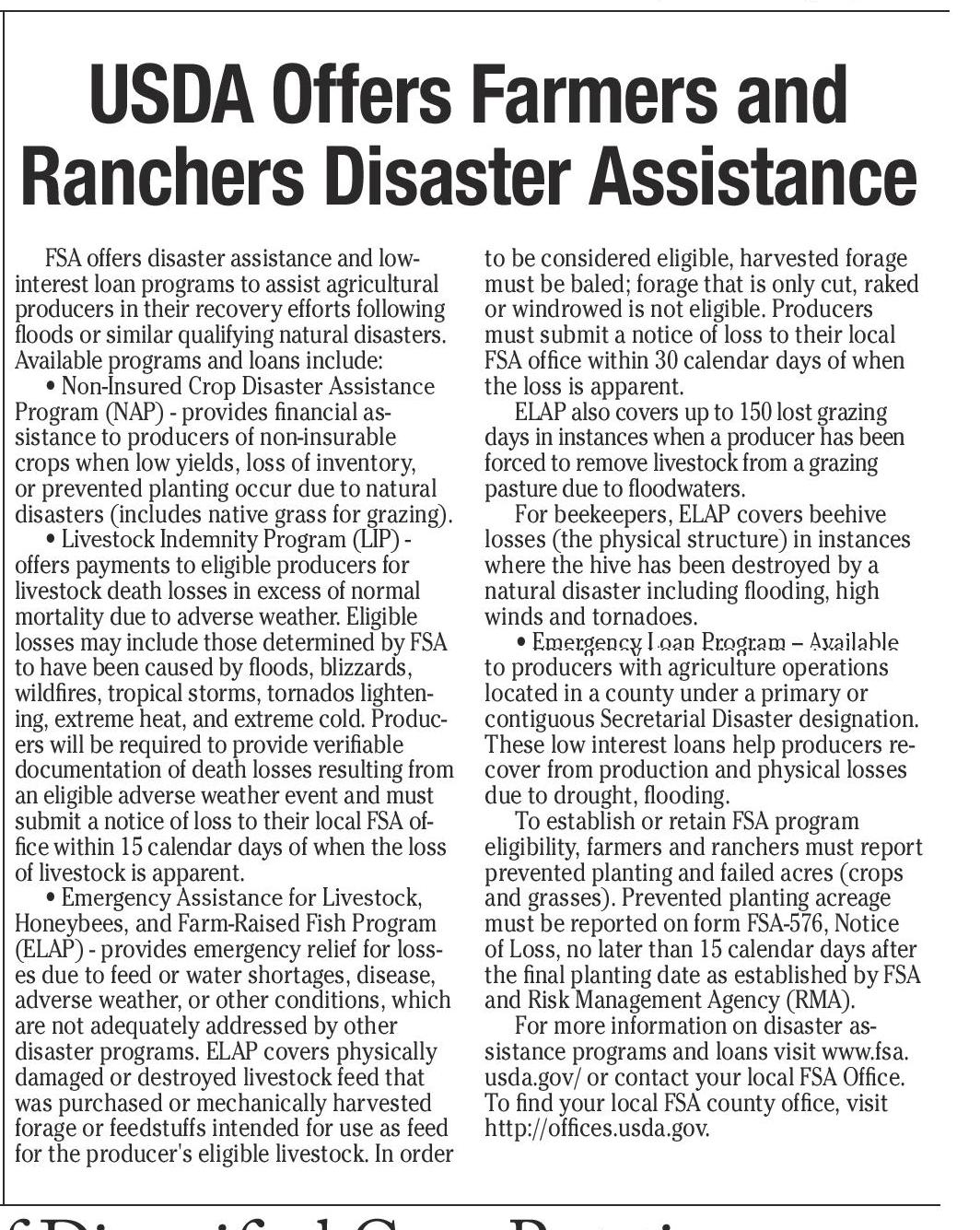

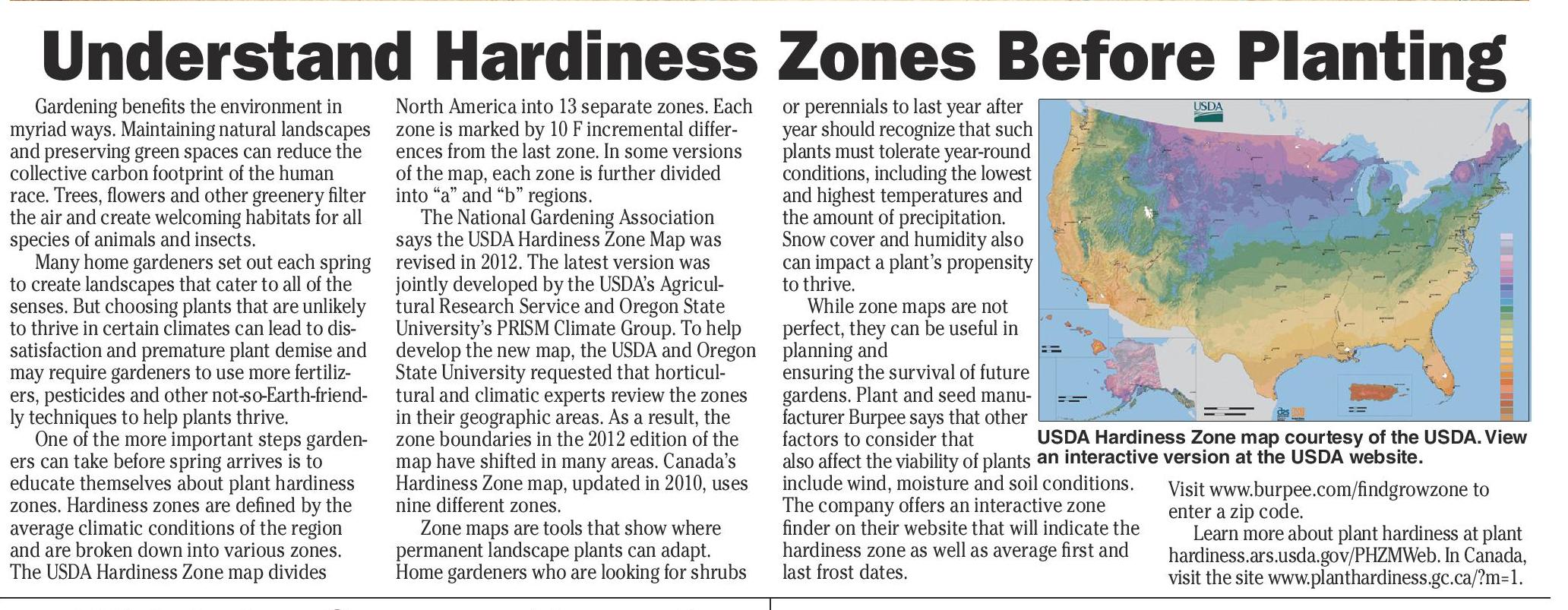





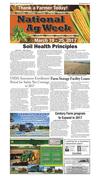

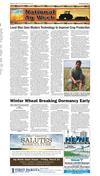



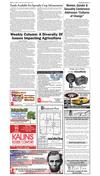

 Previous Page
Previous Page






